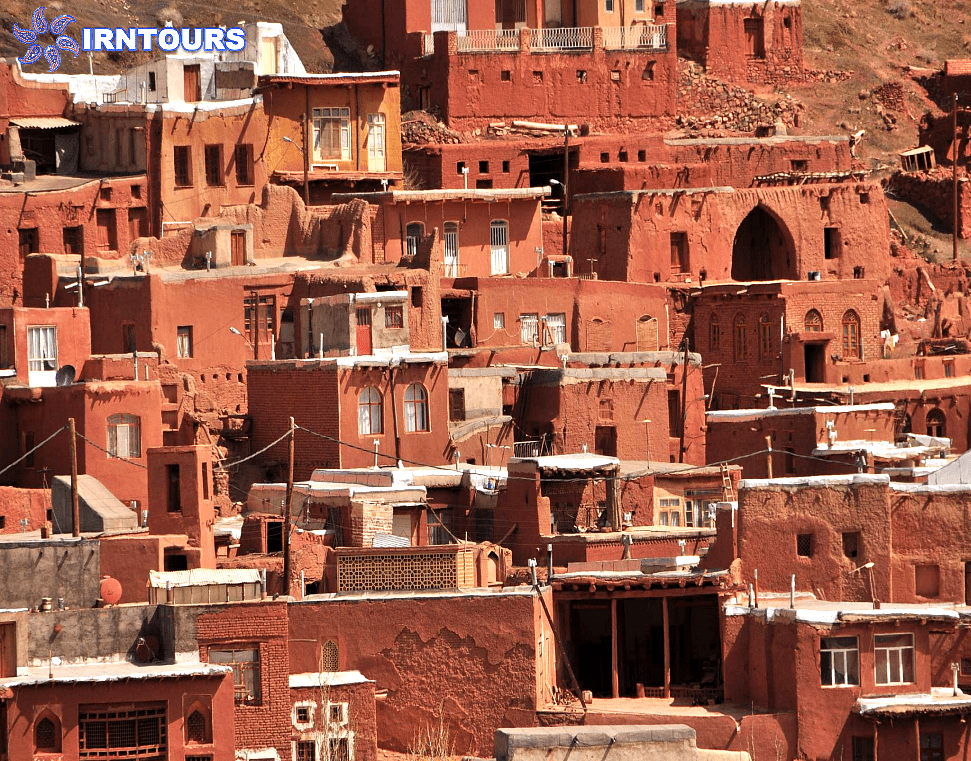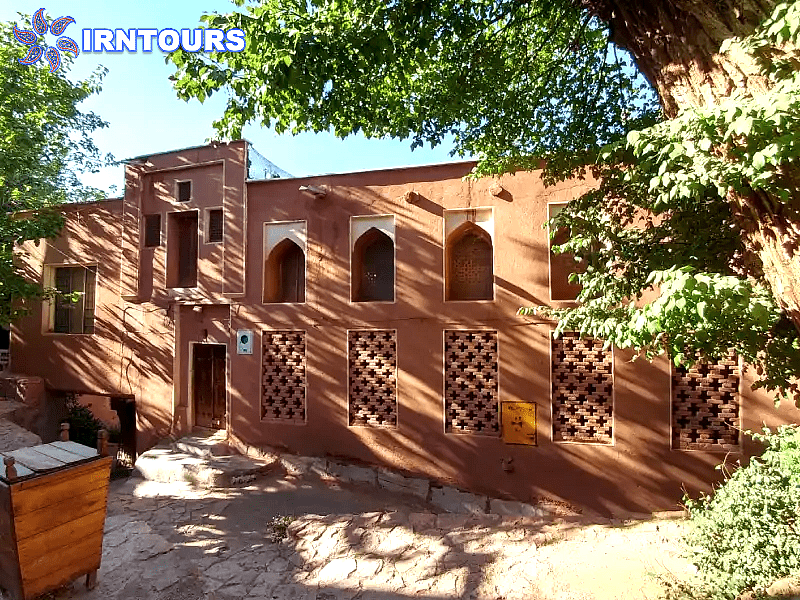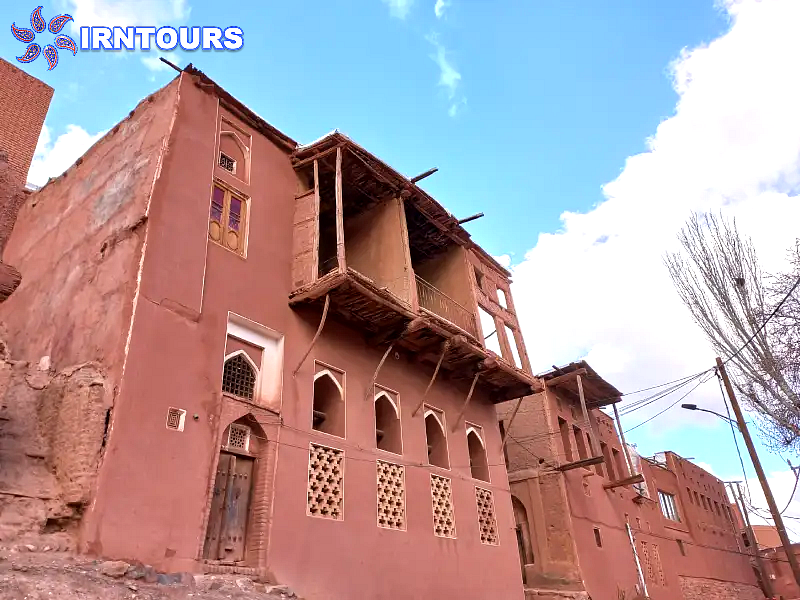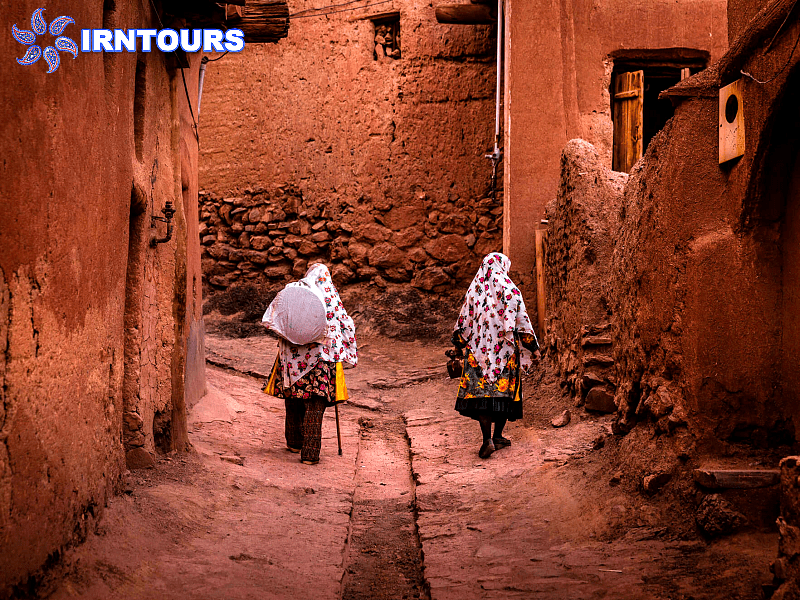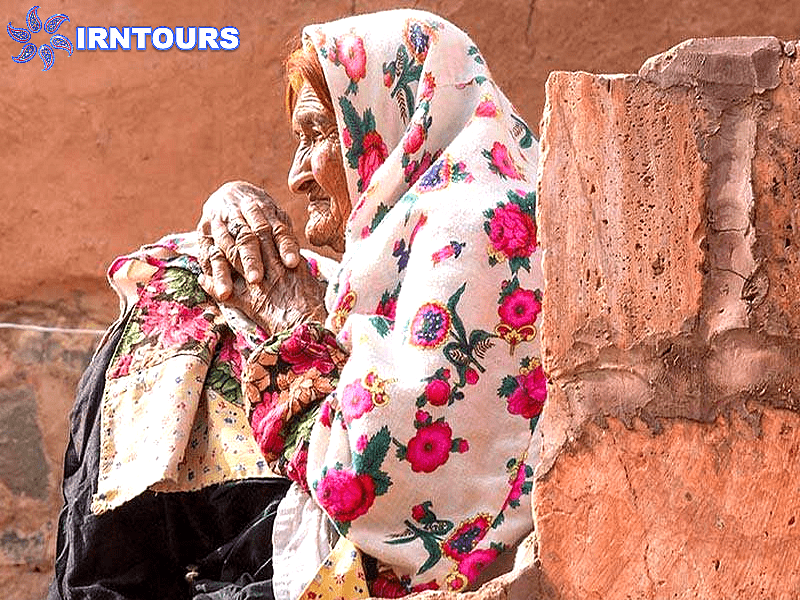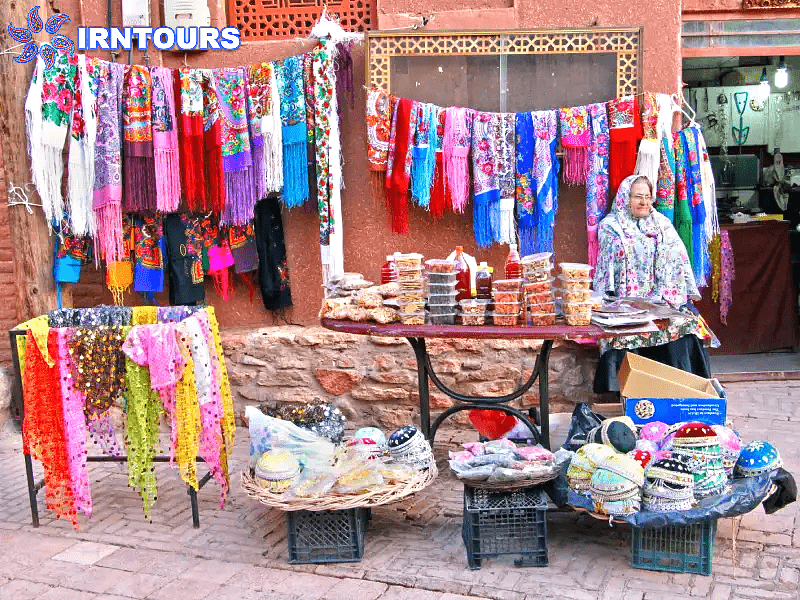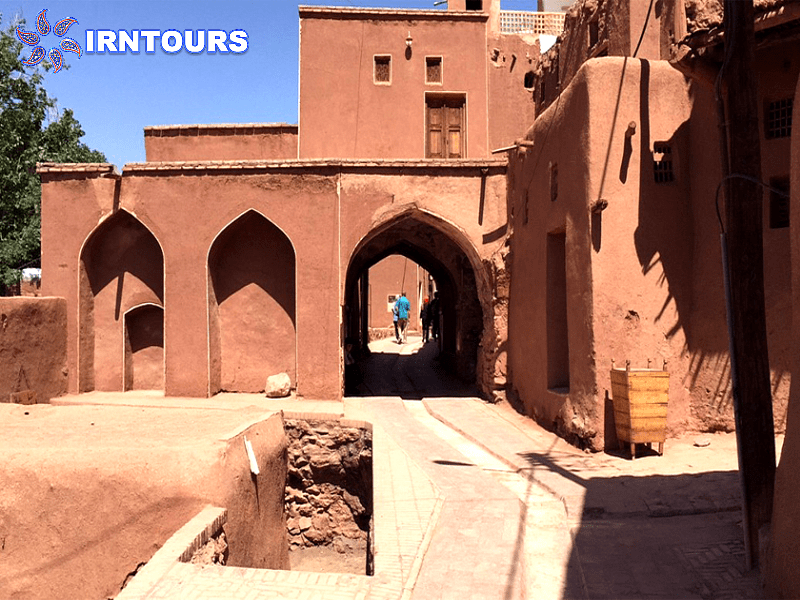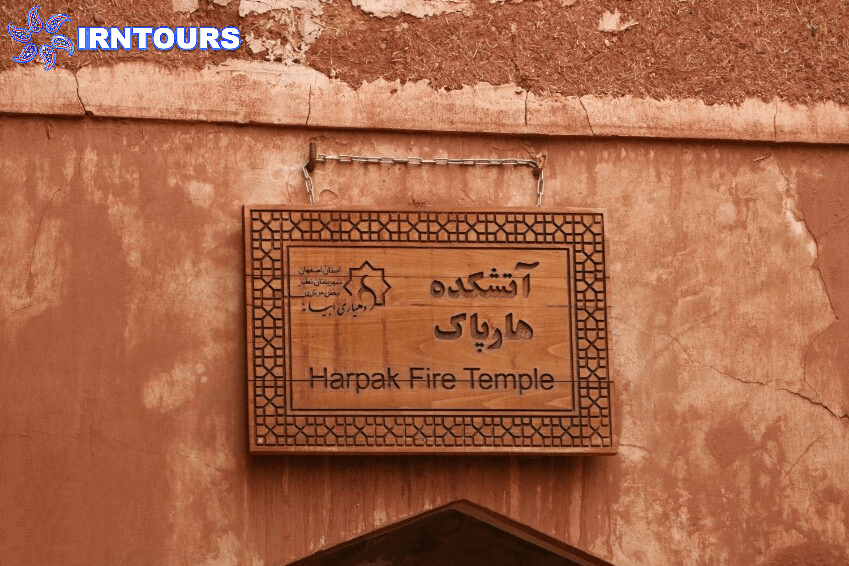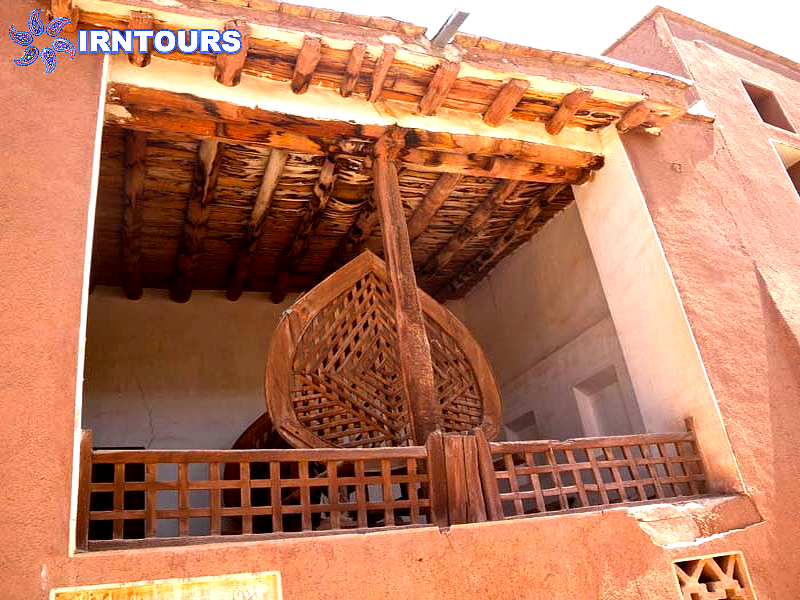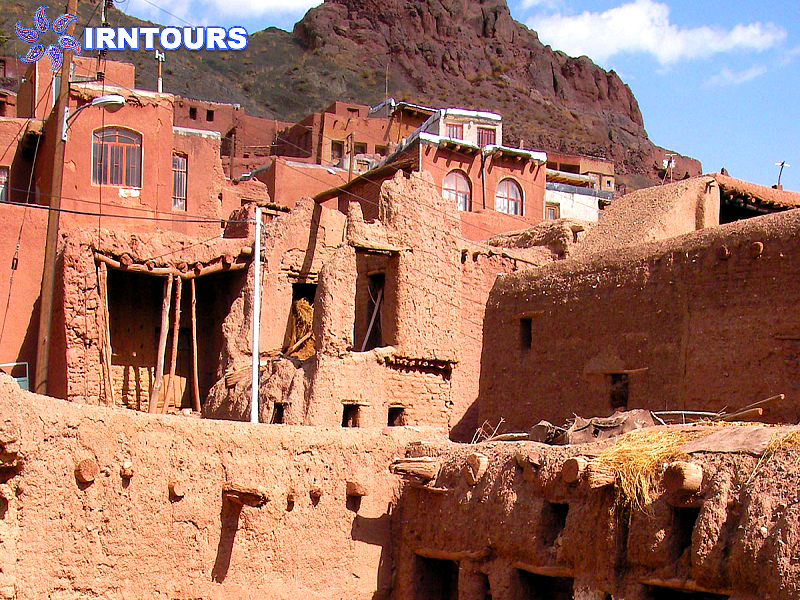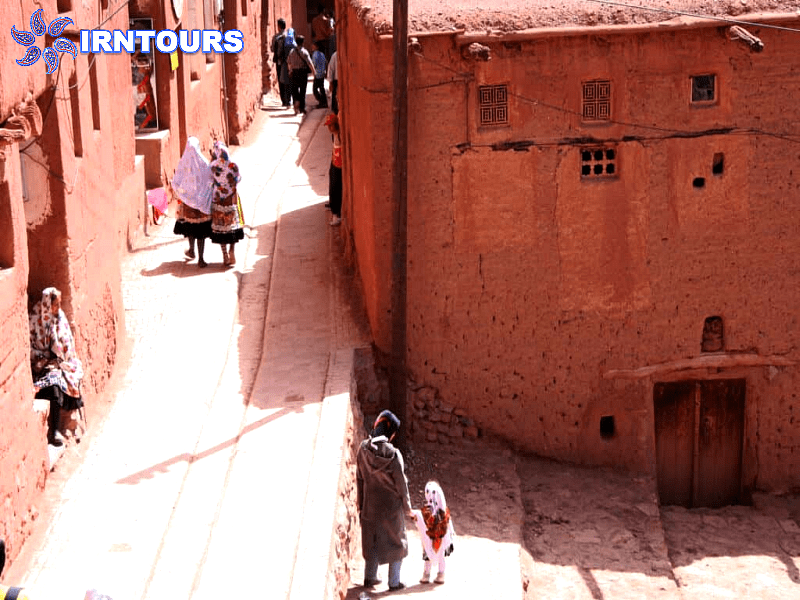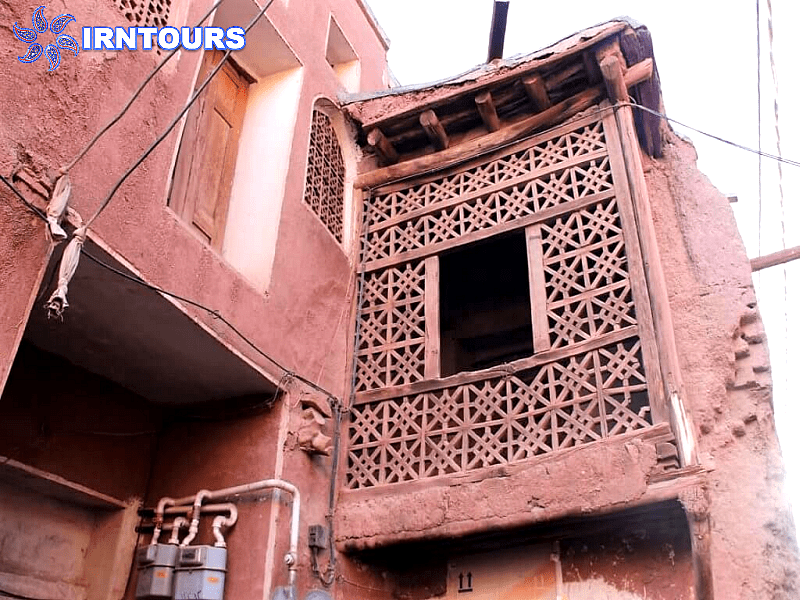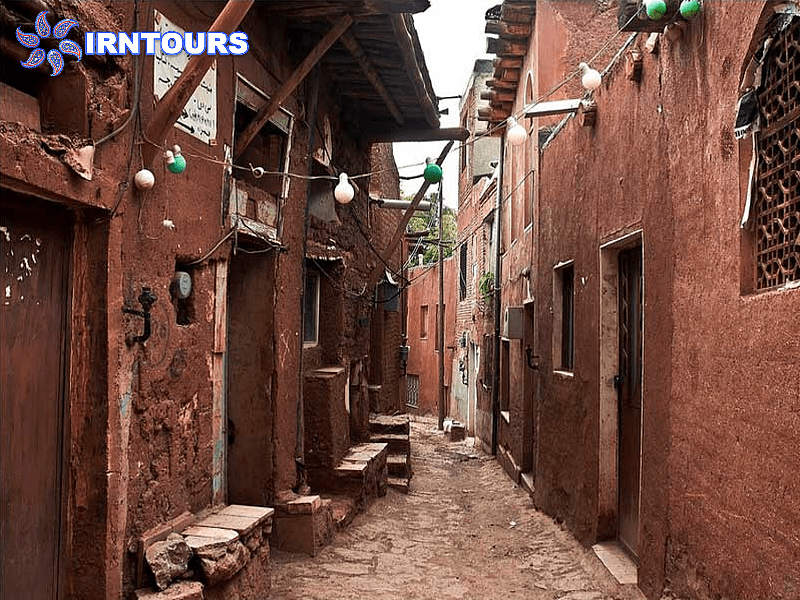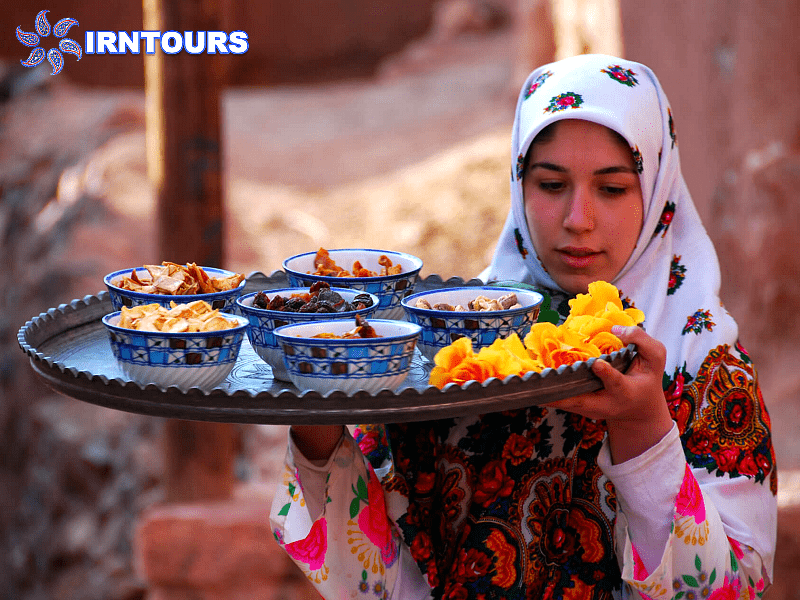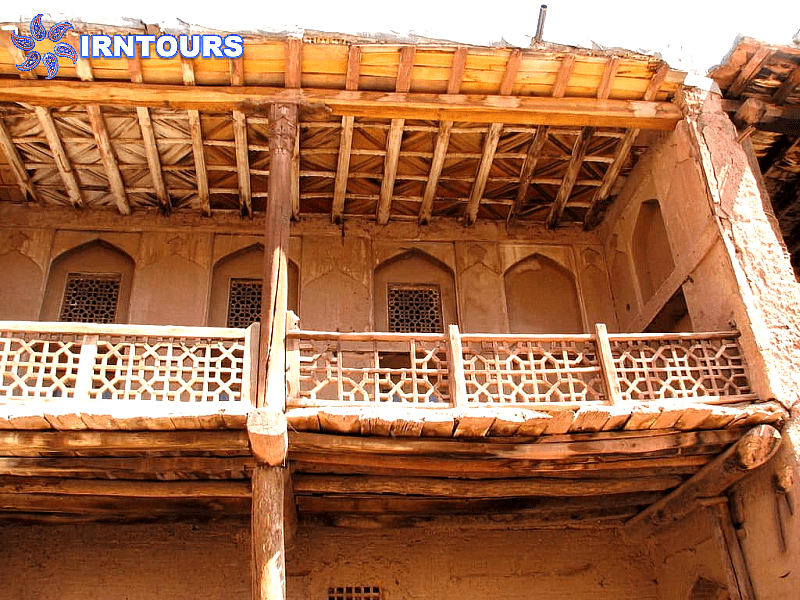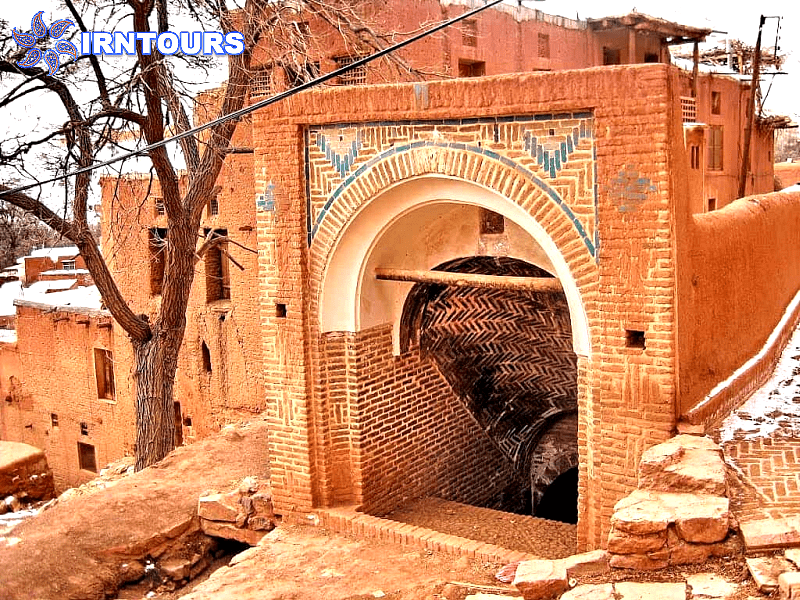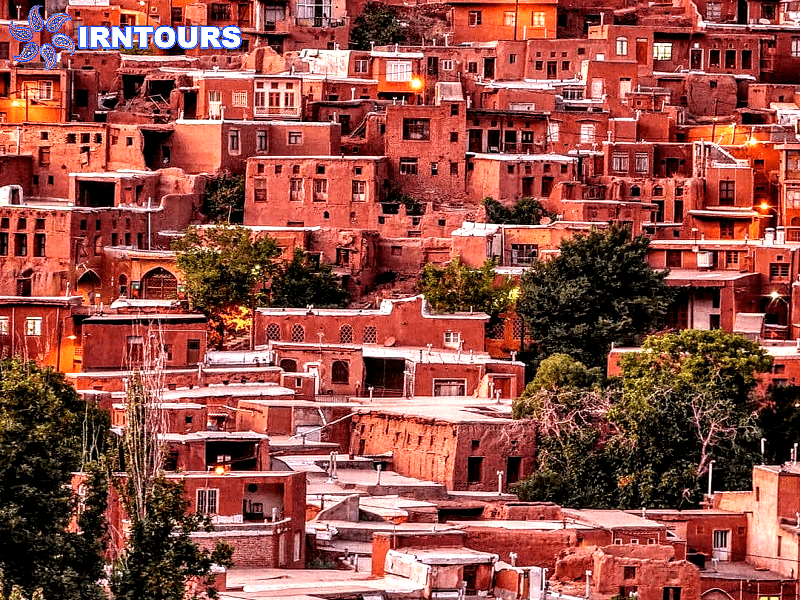About Abyaneh Village
Abyaneh is one of the special and scenic villages of Natanz in Isfahan province, which is popular not only among domestic tourists, but also among foreign tourists and often becomes the subject of their photography. Abyaneh is one of the few villages in Iran where native people still wear their traditional clothing and have preserved it. The red color of the old buildings of the village, which are located on the slope of the gray slope of the mountain, have given a double charm to Abyaneh. In fact, the combination of nested alleys, various historical monuments, geometric windows, inlaid doors, etc. is spectacular and attractive for every viewer.
Since this tourist village has provided good accommodation facilities for travelers, you can easily have fun there and spend a night with the local people. If you are inspired to travel to Abyaneh and see its attractions, don’t miss this article.
Introducing Abyane Village
Abyaneh village is one of the sightseeing places of Kashan, which, in addition to the monuments and historical monuments, has a great geographical location and is located in an area with good weather. Abyaneh was called “Viuna” in the local language, and the root of this word is composed of two words “Vi” and “Viyaneh” which means the willow forest; Over time, this name has changed to Ovianeh and later to Abyaneh.
The life of native people is based on agriculture, horticulture and animal husbandry, which is done with traditional methods. Abyaneh women have an effective role in participating with men in economic affairs. Seven series of aqueducts of this village are used to irrigate fields and gardens, which have products such as wheat, barley, potatoes and various fruits such as apples, plums, pears, apricots, almonds and walnuts. Carpet weaving is another way of making a living in Abyaneh, which has become popular in recent years and has led to the establishment of about 30 carpet weaving workshops. However, weaving, which used to be one of the most lucrative jobs for women in the village, is now somewhat defunct.
The height of Abyaneh village reaches 2,222 meters above sea level, and therefore it has a cold and moderate climate. Besides, it is one of the highest residential areas in Iran. There are foothills around the village that protect it from adverse environmental factors like a natural shield. The presence of springs and a small river have led to the expansion of forests and fields, and despite the desert climatic conditions, this region has favorable and good weather and relatively hot summers and cold winters.
The texture of the village, the shape of the structures and the type of materials used in them are also affected by this issue, which has caused the formation of a terraced village with a dense texture and connected buildings, with the foothills in the north, the village in the middle, and the fields in the south and east of it. Structures and openings are also built facing the valley and back to the foothills. In addition, the main roads of Abyaneh village are located in line with the ground level and the secondary roads are designed in line with the slope of the land.
Abyaneh consists of three neighborhoods: “Pol” and “Yasmon” as Baladeh and “Hardeh” neighborhoods located in the east of Deh; However, new constructions have been done in the neighborhoods of Ziaratgah and Panjeh Ali located in the west and the western entrance of the village.
The mountainous nature of this region, as well as the relatively long distance from the densely populated centers, has the advantage that the people have well preserved many of their traditional customs, language and dialect, and their colorful clothes. The traditional dress of Abianeh men includes wide and long pants made of black fabric, and for women, it includes a long shirt with floral fabrics and a white scarf, which is still popular among the people and they are prejudiced against it.
Where is Abyaneh Village ?
- Abyaneh village is located at the foot of the Vulture mountain and it shines like a jewel 40 km northwest of Natanz and 70 km south of Kashan in Isfahan province. With the launch of the Kashan-Natanz-Isfahan highway in recent years, tourists can easily access Abyaneh.
Using the Persian Gulf highway that connects Qom to Isfahan is one of the best ways to access Abyaneh. After Kashan, enter the Abyaneh exit, passing through the villages of Henjan, Yarand, Kamjan, Barzeh and Tara, and finally reach Abyaneh. - Address : Abyaneh Village, Natanz, Isfahan
Architecture of Abyaneh houses
All the houses in the village are built on the slopes of the Vulture Mountain in the north of the Borzroud River and have an impressive architecture. Because just like the Masuleh terraced houses, the flat roofs of the lower houses without any walls around them act as the courtyards of the upper houses. For this reason, this village looks multi-story.
The rooms of the houses have wooden sash windows, and in most of them there are protruding wooden verandas and taramis, which have created a spectacular and interesting view due to their location in the narrow alleys. The thick adobe walls of the houses are like a thermal capacitor and prevent high temperature fluctuations during the day and night. Since the openings are located only on one side of the structure, residents have installed roof skylights for their houses to provide light and ventilation.
One of the charms of the houses is the red color of their exterior wall, which is covered with red soil belonging to the nearby mine of the village. The characteristic of red soil is that the more it rains, the stronger it becomes; Just like the native people of this village, who have been as patient as a mountain and as stubborn as a rock in the face of natural disasters, and they love the tradition, architecture, and souvenirs of their ancestors so much that they have preserved them until now.
The structure of the houses in the village is “spiral” and they date back to the Seljuk, Safavid and Qajar periods. Basically, the alleys of the village are designed in order to break the power of the wind, narrow and crooked and without dead ends, and walking in them and getting drunk in the smell of the soil of these alleys is attractive for every tourist.
The houses that belong to the Seljuk period do not have a yard, and a five-meter-high porch can be seen on their southern side. These houses have a play space in the form of a roofed yard called Safa, which is used for various programs, including weddings and mourning; In addition, the rooms of the houses are built around the Sefa.
Some houses also belong to the Safavid period, and four-row houses are more common in them. In addition to the parallelism in these houses, distinctive interior decorations have been used in them.
Due to the steep slope of the village, it has not been possible to build the required spaces for the houses, and as a result, the families have created a cave-like space for themselves in the hills of one kilometer of the village, from which only short doors can be seen from the outside. People use this place to keep livestock, winter provisions and unnecessary things.
History of Abyaneh village
The age of the historical village of Abianeh is not exactly known; Although it is estimated to be 1500 years old, it is one of the oldest residential areas on the edge of the Iranian desert.
The old texture of the village was included in the list of national monuments in 1975; In addition, the ritual of palm turning, rattle ritual and Abianeh dialect were registered in the list of spiritual works of Iran in 1392. The historical works and monuments of the village belong to different historical periods from Sassanid and Seljuk to Safavid and Qajar, among which we can mention “Harpak Fire Temple”, the oldest historical work of Abyaneh.
It may be interesting to know that the Safavid kings, many of their relatives, and also the courtiers who went to Natanz for summer residence, preferred to stay in Abyaneh.
Abyaneh Fire Temple
It was during the time of Shah Abbas I that the development of the city of Kashan was put on the agenda and the foundation of today’s Garden Fin was laid. Cultural heritage mentions Ghiyasuddin Jamshid Kashani as the designer of Fin Garden. The famous Safavid era mathematician who discovered the law of surface difference 200 years before Pascal and made the most of the natural slope of the earth in Garden Fin. However, some experts consider Sheikh Bahai as the designer of the garden.
Abyaneh fire temple can be considered the oldest historical work of the village, which is considered as an example of Zoroastrian temples, and a small hall is left from its lower floor. This fire temple is called “Harpak” which in Abyan dialect means “here” below and “pak” means stair. However, some do not believe in the name of Harpak and consider its correct name to be Harpak, who was one of the important figures in Achaemenid and Median history.
This fire temple was built during the Achaemenid period; But the height of its architecture goes back to the Sassanid period 1500 years ago. This three-story structure is built in the form of four arches in the main line of the village and it is possible to see it from all sides.
In the center of the fire temple, there was a bright fire that, in addition to respecting the fire, lit the path of the caravans. Coal was used to keep the fire burning, which is still abundantly found around the village. The floor dedicated to religious rituals is located at the street level. The dome-shaped hall of this structure led to the fire place and other parts related to worship.
Abyaneh sightseeing places
- Abyaneh Holy shrines : There are many shrines in Abyaneh, which are historically and religiously important for the villagers and tourists.
- Shrine of Prince Yahya and Prince Isa (AS) : In Herde neighborhood, located in the eastern corner of the village, there is a tomb belonging to Prince Yahya and Prince Isa (AS), the children of Imam Musa bin Jafar (AS), which has a distinctive architecture compared to the structures of the village. The charm of this court is its simplicity that despite the renovations in 2006, it still has its originality.
In the central courtyard of this shrine, there is a large fountain whose water is supplied from the village stream. In addition to the beautiful octagonal dome of this place, which is decorated with turquoise tiles, there are inscriptions in the portico of the shrine that have been restored. There is no writing on the shrine of this shrine; However, poems and verses along with the restoration dates of the building are engraved on its roof. An old wooden pulpit is located in the south porch of Imamzadeh, overlooking the southern hill of the village. - Hinza shrine : Hinza Shrine is another attraction of Abyaneh, which is known as the burial place of Bibi Zubaidah Khatun (PBUH), the daughter of Imam Musa bin Jafar (PBUH). This tomb is located in the heart of the rocks of a narrow valley in the southeast of the village, and a cave-like indentation can be seen in this place, which has become a part of the shrine structure. According to local people, this honorable lady hides in this room with the help of Abyaneh people to escape from those who were chasing her, and then they go to Henjan village. where there is a shrine attributed to him. With these words, it can be said that the Hinza shrine is not the burial place of the Prophet and was only his passage.
Abyaneh Mosques
- Abyaneh Grand Mosque : Abyaneh Jame Mosque, which is also called Miandeh Mosque, is older than other Abyaneh mosques. Out of the two naves of the mosque, the old nave has a wooden floor and is connected to the main alley through a short door. The old wooden mihrab of the mosque, whose construction dates back to 477 AH, is located in the southern part of this shrine and attracts every viewer thanks to the sculptural decorations of flowers and bates and Surah “Yes” in Kufic script. The new nave of the mosque consists of a large hall with a skylight on the roof of its middle area, the capitals of which are carved. The wooden ceiling decoration looks interesting in its own way and is framed with regular geometric patterns and inscriptions of Quranic verses.
There is also a wooden pulpit in this mosque, the date of its construction dates back to 466 AH during the Seljuk period. The pulpit is also decorated with floral motifs, inscriptions in Kufi script and eight-feathered flowers. The decoration of the mosque is not limited to its pulpit and mihrab, and there are carvings of prominent lines and flowers on its entrance door. - Porzale Mosque : Porzaleh Mosque is another historical building of Abyaneh, which dates back to the Ilkhani period. This two-story mosque has two entrance doors, the date 701 AH is engraved on the eastern entrance door, and therefore it is considered the oldest door in the village. In the west, the mosque is as old as the time of King Ismail Safavi, and the date 1058 AH can be seen on it. There is a reservoir and a cistern under the mosque. The nave on the ground floor is connected to a small corridor through a single-hung door, which leads to the alley on one side and to the staircase on the upper floor on the other side. The second floor of the Parzale mosque has a large hall from the Safavid period, and a small porch was added to it at the end of the Qajar period.
- Yusmon Mosque : Yusmon Mosque, which dates back to 700 years ago, consists of a two-story structure, the science of Yusmon neighborhood is located on the top floor. Interestingly, in the past, the families of this neighborhood had their own special place to attend the prayer ceremony, which was determined by inheritance.
- Hajjatgah Mosque : The 400-year-old Hajjatgah Mosque is located next to the village’s old cemetery, and crescent-shaped windows stand out in its brick facade. The date of 953 AH is engraved on the mosque, which coincides with the reign of Shah Tahmasab I. In the past, one of the rooms on the top floor of the mosque was used to temporarily bury the dead of the lords. There is a throne in front of the mosque, which is called “Mezgeh Throne” and apparently one of the rebels of this area, Mashaullah Khan Sardar, built it. In addition to worshiping, the people of Abyaneh also visit this mosque to fulfill their needs.
- Other Mosques : The Palizeh Reservoir and Mosque, which belongs to the Safavid-Pahlavi period, was registered in the list of national monuments of Iran in 2004. This mosque, which is located in Yusmon neighborhood, actually has only one large hall, which is separated from the male and female sections by installing a curtain.
Panjah Ali Mosque is one of the new mosques of Abyaneh in Ziaratgah neighborhood, Dem Darwaza Mosque in Bala neighborhood, which was used in the past to keep the bodies of the dead until the morning of the burial, Chihl Angu Mosque in Pas Khanqah neighborhood, Sarcheshmeh Mosque in Hardeh neighborhood, Sarqanat Barqa Mosque in the neighborhood On the other hand, there are the mosques of the historical village of Abyaneh.
Khanqah
The Khanqah was a place for living and gathering of Sufis and dervishes, which was also used as a resting place for Safavid kings in the summer. Among the Khanqah of Abianeh, we can mention the Khanqah located in Pas Khanqah neighborhood, which was built during the Safavid era of Shah Abbas and consists of a three-story building with a brick facade and a pediment decorated with paintings from the Safavid era.
Ashrafa Khanqah also has its own charms and calligraphy decorations stand out on its walls.
Reservoirs
In the past, people in desert areas used reservoirs to store water and meet their needs. Abyaneh was no exception to this and currently there are four reservoirs in this village that cannot be used. Mian Deh Reservoir is located in Mian Deh neighborhood and it is 100 years old. Palize reservoir in Yosmon neighborhood, Porzele reservoir in Bala Deh Dar neighborhood and Pa Baghche or Pas Baghche in Yasmon neighborhood are other historical monuments of Abyaneh.
Museum of Anthropology
Abyaneh Museum of Anthropology started its activity in 2004 and, in addition to written Qurans and old manuscripts, it has exhibited objects such as agricultural tools, cooking utensils, traditional clothes, etc. This museum is located in the old kindergarten and laboratory building of Abyaneh High School, and after restoration, it was used as a museum, and the purpose of its establishment was to introduce a corner of the culture and customs of the people of Abyaneh, which was realized by presenting the objects used by the people from the past until now.
Abyaneh castles
There are three castles in Abyaneh, which people used in the past to protect their lives and property against local rebels. Pal Hone Castle or Takht Haman, located in the southwest of Abyaneh, is nearly 200 years old, and it is interesting that the contribution of people in the construction of this castle is mentioned in its document.
Paleh Castle is located in Pol neighborhood in the northwest of the village.
Hurdeh Castle is located in Hurdeh neighborhood in the northeast of Abyaneh. This fort has one meter thick walls that are four to five meters high. The main materials used in Herdeh Castle are large stones; While in the construction of other castles, clay has been used.
The old cemetery of the village
The old cemetery of Abianeh is also interesting in its own way; Especially its tombstones, which are in the shape of a triangle and the details of the deceased are engraved on them. In this cemetery, to determine the gender of the deceased, they have used the image of the shoulder, which shows that the grave belongs to a woman.
Hussainiyah
There are two old Hosseinieh and one new Hosseinieh in Abyaneh village. The new Hosseinieh, which is called Hajtgah, was built between 1993 and 1996 in the west of Abyaneh. One of the old hosseiniyehs is located in Bala Deh neighborhood, where the palm tree of the palm turning ceremony is kept. Another Hosseiniyeh of the village is Heredeh Hosseiniyeh in the vicinity of the shrine of Prince Yahya and Prince Isa (AS), where the palm tree of the lower neighborhood is located.
Bathrooms
There is a bathroom in the upper neighborhood and a bathroom in the lower neighborhood of Abianeh, where in the past people used the bathroom of their neighborhood. Today, the bath in the lower neighborhood (Herdeh) has been damaged and people use the upper neighborhood bath, whose maintenance and repairs are financed from the village’s general expenses. In the past, when the use of these baths was popular, the natives paid one toman to go to the bath; But strangers had to pay more. In those days, the local women paid a loaf of bread as the cost of their bath to the person in charge of the bath, and unmarried boys could also go to the bath for free until they got married.
Mills
In the local language, the mill is called “Are” and there are three mills in Abyaneh with the names “Are Hareh”, “Are Miun” and “Are Darion”. These mills are located in the west of the village along the Darion river and in the past they were rented to millers trusted by the people.
Caravans and inns
The existence of caravanserais, especially in desert areas such as Abyaneh, is a common thing; However, from the two caravanserais of Abyaneh, nothing was left but the ruins and they were destroyed by the flood. One of these caravanserais is located in the west of the village and the other one is located near the current location of the bank. In addition, there are traces of the existence of small caravanserais in Abyaneh, which have also been destroyed by the fate of other caravanserais in Abyaneh.
Oshtarkhaneh or camel sheds were also not few in Abyaneh and they were used for the movement of camel caravans and rest for travelers. These structures had a large building with a high roof, the owner of each of which was a rich person; However, some of these wealthy people provided camel sheds to the caravans for free.
Jafareh Shatarkhun or Jafareh House is one of these historical structures, which is considered a four-sided building and has connected rooms around the central space.
The Shirazi camels in Yusmon neighborhood and above Hammam Deh, the Muzafara camels below the Parzaleh mosque, whose dowry was one of Abyaneh’s wives, and the Taqi Mir Shah Ali camels, known as Khana Haghighi, right across from the Tenth school, are among the other Abyaneh camels.
Abyaneh spring
There are many springs in the village of Abyaneh, which have led to the greenery and vast fields of this area.
Raisoun spring is located above the village mill and supplies drinking water to the residents. People believe that since this spring flows from the foot of the barberry tree, it prolongs human life.
Cheshme Do Abbi, which is located in the west of the village and has water all year round, is the most important source of water in Abyaneh.
Among other springs of the historical village of Abianeh, we can mention the Tarder spring or aqueduct, Karshak spring, Pal Hamon Hareh and Hinza; There are also springs such as Pi Qestan, Pe Ki Ja, Pash Yuvinga, Vashasidra, Pasht Lil and Pal Hamon Bala in the south of Abyaneh, which are worth visiting.
Abyaneh entertainments
- Sightseeing : Walking in the alleys of the village and watching the red-colored houses on the mountainside and local people in traditional clothes is the main reason for sightseeing in this area. In addition, you can record these pure photography subjects forever. If you go to the heights around the village, you will be faced with an extraordinary view. When traveling to Abyaneh and taking pictures of the native people, be sure to ask for their permission! It is possible for tourists to rent and wear local clothes to take a souvenir photo of themselves in the scenic environment of the village.
- Nature tourism: The beautiful nature around Abyaneh is suitable for nature tourism, light climbing, picnic in nature, walking along the river, etc. and can be included in the tourist’s schedule.
- Tourist tours: These tours are usually organized by local people for tourists during busy days, which include nature tourism and excursions in the surrounding villages and give you the experience of being in one of the most beautiful nature tourism routes in Iran.
Abyaneh Souvenirs
What makes Abianeh souvenirs more special is that they are sold in front of the village’s red-colored houses with wooden windows; While some of the villagers are sitting on the steps and watching.
One of Abyaneh’s souvenirs made from its nature is lavashk, which has many fans among tourists. In addition to dairy products, walnuts, almonds, apples and plums are also sold in this village.
- Among other important souvenirs of Abianeh, we can mention all kinds of handmade jewelry such as necklaces and bracelets; In addition, carpets, decorative wall hangings and jewelry are also seen among the items.
- Lavashk, dairy products, apples and walnuts, and handicrafts are some of Abyaneh’s souvenirs
Abyaneh in autumn and winter
Abyaneh is beautiful in all four seasons. In addition to the spring season, when the beautiful blossoming of the trees give life to the face of the village, and relatively mild summers, where such weather is rarely seen in other desert villages, don’t miss the thousand-color autumn, which makes the way to the village spectacular and a pleasant experience for you. will figure With the arrival of winter and the surface of roads and red houses covered with eye-catching snow grains, such an interesting sight is created that will amaze every tourist.
Stay in Abyaneh
In addition to the hotels that operate in Abyaneh village, there are many local houses and ecotourism residences in the village and its surroundings that provide you with a memorable stay. If you have camping gear and equipment with you, you can find suitable places for camping around the village.
The pleasant sound of water streams, green trees, spectacular views of fields, eye-catching red buildings with wooden openings and very delicate knots, is considered an ideal environment for many urban tourists; However, most of the villagers have migrated and those who still live in Abyaneh are old. The beautiful Abyaneh is alone and watches her gradual death.
If you have ever visited Abyaneh and interacted with its hospitable people, share your opinion and experience with our audience at the bottom of this article.


